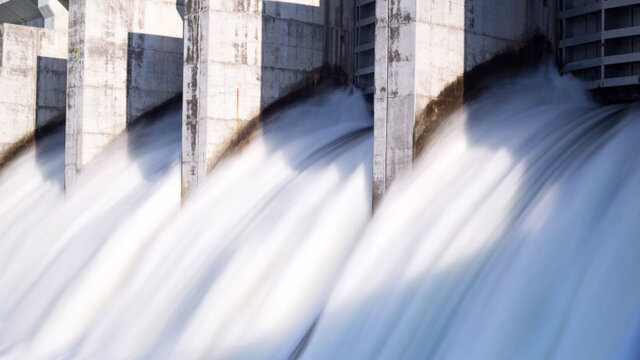Hydroelectric power plants are a key player in the world of renewable energy. Harnessing the power of water, these plants generate electricity by converting the kinetic energy of flowing or falling water into mechanical energy, which is then converted into electrical energy. In this blog post, we will explore what hydroelectric power plants are, how they work, and the different types that exist.
Hydroelectric power plants can be classified into three main types: impoundment, diversion, and pumped storage. Each type has its own unique characteristics and advantages. Impoundment hydroelectric power plants are the most common type. They rely on the construction of a dam to create a reservoir, where water is stored. When electricity is needed, water is released from the reservoir and flows through turbines, which spin a generator to produce electricity. The water is then discharged downstream. Impoundment plants are flexible and can easily adjust their output according to demand. Diversion hydroelectric power plants, also known as run-of-river plants, do not require the construction of a dam or reservoir. Instead, they divert a portion of a river’s flow through a canal or penstock to drive turbines and generate electricity. The diverted water is then returned to the river downstream. Diversion plants have a smaller environmental impact compared to impoundment plants, as they do not create a large reservoir. They are also more suitable for rivers with a consistent flow.
Pumped storage hydroelectric power plants are unique in that they can operate as both a generator and a consumer of electricity. During periods of low electricity demand, excess electricity from other power sources, such as coal or nuclear power plants, is used to pump water from a lower reservoir to a higher reservoir. When electricity demand is high, water is released from the upper reservoir to the lower reservoir, passing through turbines to generate electricity. Pumped storage plants provide a valuable energy storage solution, as they can quickly respond to fluctuations in demand.
Now that we have explored the different types of hydroelectric power plants, let’s take a closer look at how they work. Regardless of the type, the basic principle remains the same: water is used to generate electricity. At the heart of every hydroelectric power plant are the turbines and generators. Turbines are large, wheel-like devices that are turned by the force of the flowing water. As the turbines spin, they rotate a shaft connected to a generator, which converts the mechanical energy into electrical energy. The electricity produced is then transmitted through power lines to homes, businesses, and industries. The amount of electricity generated by a hydroelectric power plant depends on several factors, including the volume of water flow, the height from which the water falls or flows, and the efficiency of the turbines and generators. Large-scale hydroelectric power plants can generate hundreds of megawatts of electricity, while smaller plants may produce only a few kilowatts. One of the key advantages of hydroelectric power plants is their ability to produce clean and renewable energy. Unlike fossil fuel power plants, hydroelectric plants do not produce greenhouse gas emissions or contribute to air pollution. They also have a long lifespan and require relatively low maintenance costs. In addition to their environmental benefits, hydroelectric power plants offer other advantages. They provide a reliable source of electricity, as water is a consistent and abundant resource. Hydroelectric plants can also serve as multipurpose facilities, providing water for irrigation, flood control, and recreational activities. Despite their numerous advantages, hydroelectric power plants also have some limitations. The construction of large dams for impoundment plants can have significant environmental impacts, including the displacement of local communities and the alteration of ecosystems.
The availability of suitable sites for hydroelectric plants is also limited, as they require a sufficient volume of water and a significant height difference. In conclusion, hydroelectric power plants are an important part of our renewable energy landscape. They harness the power of water to generate electricity, offering a clean and reliable source of energy. Impoundment, diversion, and pumped storage are the three main types of hydroelectric power plants, each with its own unique characteristics. While they have their limitations, hydroelectric power plants play a crucial role in reducing our dependence on fossil fuels and mitigating climate change.
If you’re interested in renewable energy or electric power plants, contact us at:
+982166074268
+989356783825

